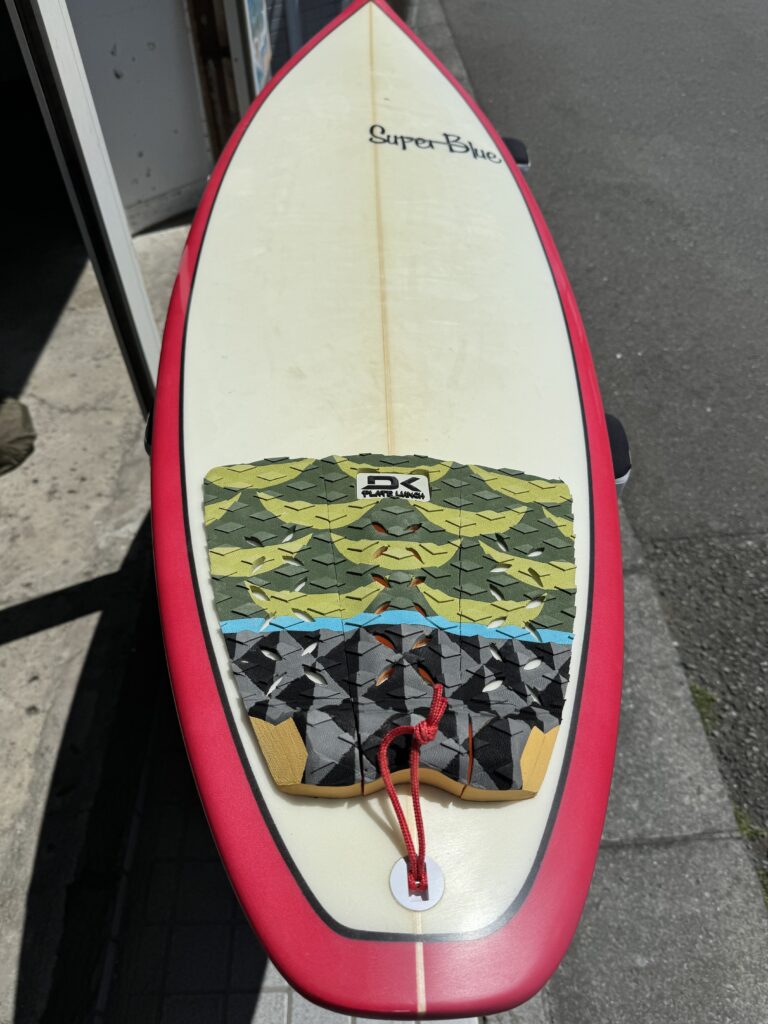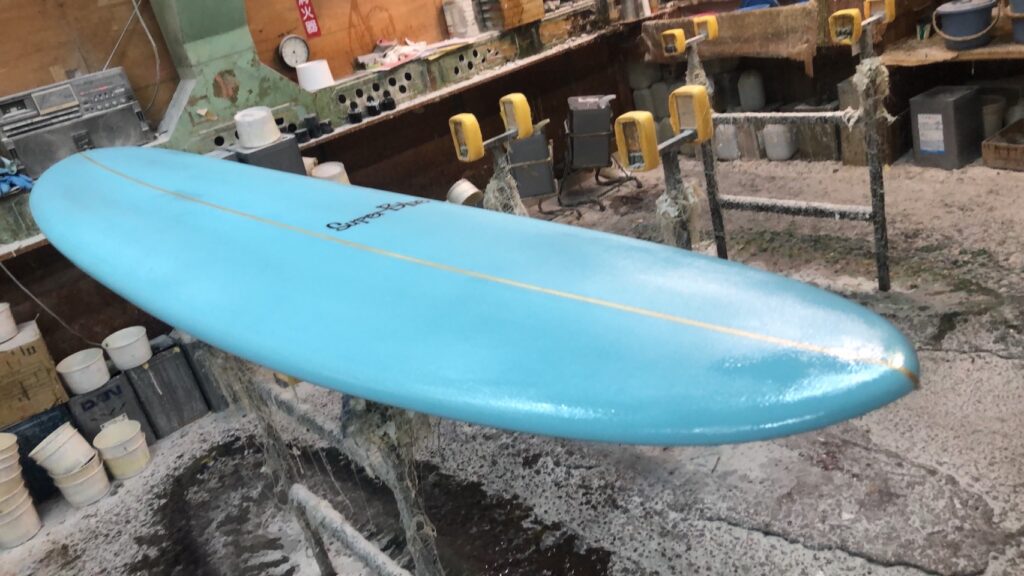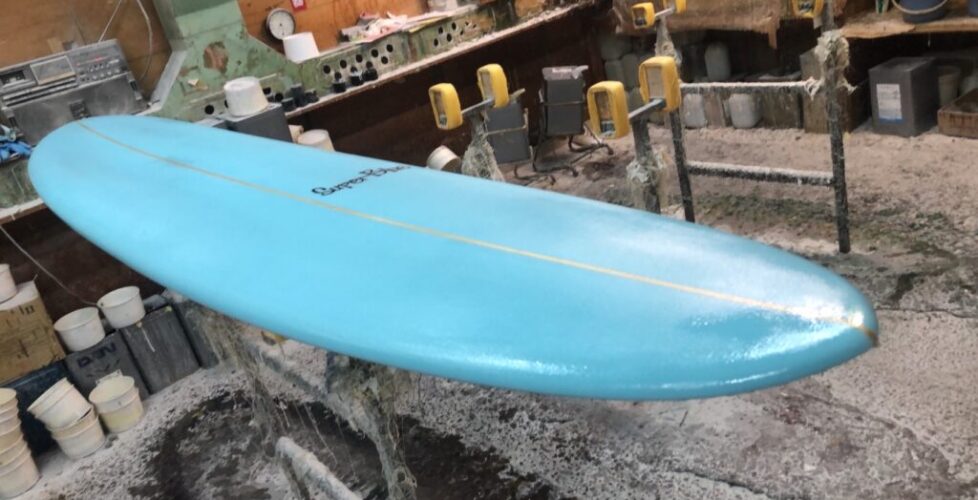5 points for beginners when choosing a surfboard
If you want to start surfing, the first big step may be choosing the right surfboard for you. However, with so many types and so many options in size and material, the choice can seem complicated at first glance. In this article, we will introduce five important points for surfing beginners when choosing a surfboard. Understanding these points will help you maximize the fun of surfing and get your surfing life off to a great start.
When starting surfing, beginners often wonder which surfboard to choose. With so many different types of boards out there, choosing the best one is not easy.
All surfing beginners go through the anxiety and doubts of not knowing which surfboard is right for them. You are not alone.
Choosing a surfboard should not be based solely on appearance or price. You need to choose the size, shape, material, etc. that suits your physique and surfing style.
In this article, we will introduce the basic points of choosing a surfboard and provide a guide for beginners to be able to choose one with confidence. Take the first step to enjoy more surfing.
Introduction: The importance of choosing a surfboard
When you start surfing, one of the first big challenges you face is finding the right surfboard for you. The choice of surfboard greatly affects the enjoyment of surfing. Choosing the right board will help you experience the joy of catching waves sooner and improve your skills faster. On the other hand, if you choose a board that is inappropriate for your skill or physique, not only will your surfing progress be delayed, but you may also not be able to fully enjoy the fun of surfing.
When choosing a surfboard for beginners, it is important to be especially aware of the following five points.
- Know the types and characteristics of surfboards : There are various types of boards, such as shortboards, funboards, and longboards, each with different characteristics.
- Check stability with size and shape : The key is to make sure the length, width, and thickness of the board is suitable for your physique and surfing style.
- Choose a material : The material will affect the characteristics of the board, such as durability, lightness, and price.
- Price range and purchase timing for beginners : Tips for finding the best board within your budget and thinking about the best time to purchase.
- Surfboard Maintenance and Storage : Learn basic care and storage tips to extend the life of your board.
By keeping these points in mind, even surfing beginners will be able to find the perfect surfboard for them. To enjoy the fun of surfing to the fullest, start by choosing the right surfboard.
1. Know the types and characteristics of surfboards
The first step in choosing a surfboard is to understand its types and their characteristics. There are three main types of surfboards: shortboards, funboards, and longboards. These boards are chosen based on surfing style, wave type, and rider experience level.
short board
As the name suggests, a shortboard is a relatively short surfboard with excellent maneuverability and maneuverability. It is suitable for intermediate to advanced riders who want to hone their technique, as it allows for steep cutbacks and advanced maneuvers, and can handle waves for advanced users. However, it is not stable and difficult for beginners to catch waves, so it is recommended that you try it after gaining some experience.

fan board
A fun board is a board that falls somewhere between a shortboard and a longboard, and is suitable for beginners to intermediate riders. Fun boards are both stable and maneuverable, making it easy to catch waves and make turns. This is the perfect option for those who want to learn the basics of surfing while gradually improving their technique.

longboard
Longboards feature a long, wide design that provides stability and buoyancy. This allows even beginners to catch waves relatively easily and enjoy surfing smoothly. It is also suitable for surfing in areas with limited wave conditions, as it allows you to ride even small waves.

The key to maximizing the fun of surfing is to consider the characteristics of each surfboard and choose a board that suits your surfing style, wave conditions, and experience level. Find the surfboard that suits you and enjoy the world of surfing to the fullest.
2. Check stability by size and shape
Size and shape are very important factors when choosing a surfboard. If the size is not suitable for the rider, it will be difficult to control the board and you will not be able to enjoy surfing. Here we will explain how the size and shape of a surfboard affect its stability.
surfboard size
Surfboard sizes come in length, width (wide), and thickness (thick), all of which should be chosen based on the rider’s weight, physique, and surfing skill level. In general, beginners should choose a board that is long and wide. This is because the board is more buoyant, making it more stable and easier to ride waves.
surfboard shape
The shape of a surfboard consists of the shape of the nose (front end), the shape of the tail (rear end), and the curve of the bottom (rocker). A board with a wide nose makes it easier to catch waves, and a board with a wider tail makes it easier to turn. Also, a board with more rocker will have more maneuverability, but will be slightly slower. For beginners, a board with less rocker and a wider nose and tail is recommended.
How to check stability
The best way to check the stability of a surfboard is to actually stand on it. Surf shops often allow you to balance on a board placed on the ground. Another option is to refer to a surfboard size guide that matches your weight and build.
Choosing the right size and shape of your surfboard will help you improve your surfing skills faster and have more fun. For beginners, we recommend choosing a board that emphasizes stability and buoyancy, and gradually moving to a board that suits your style.
3. Choose the material: balance between durability and operability
When choosing a surfboard, pay attention to the material as well. The material greatly affects the durability, lightness, flex, and price of a surfboard. Whether you’re a beginner or an expert, it’s important to choose the material that meets your needs.
Main surfboard materials
- Polyurethane (PU) : The most common surfboard material, offering excellent durability and flex. It is favored by many surfers because of its weight and good response to waves.
- Epoxy (EPS) : It is lightweight and has high buoyancy. You can easily ride even small waves, making it suitable for beginners. It is also attracting attention as an environmentally friendly material.
- Soft board : The surface is covered with a soft material, making it popular with beginners and children. It absorbs shock easily and is highly safe, but its operability is somewhat inferior.
Points to consider when choosing materials
- Durability and Maintenance : Although PU is highly durable, it may require delicate handling. EPS is easy to maintain and highly durable.
- Ease of use : EPS is lightweight and easy to operate, making it especially recommended for beginners. PU is a material used by professional surfers and is suitable for those seeking advanced operability.
- Price : Soft boards are relatively inexpensive to purchase. The higher the quality of PU and EPS, the more expensive it will be, but it will be worth it in the long run.
The choice of surfboard material is one of the important factors that affects the enjoyment of surfing. Choose a material that suits your surfing style and level, keeping in mind the balance between durability and operability.
4. Price range and timing of purchase for beginners
Price is another big consideration when purchasing a surfboard. You don’t want to invest too much, especially if you’re a beginner, but boards that are too cheap may lack performance or durability. The timing of purchase is also one of the factors that affects the price of a surfboard.
Appropriate price range for surfboards for beginners
- Soft board : Generally about 20,000 yen to 50,000 yen. Many models are suitable for beginners and children, and are both safe and easy to handle.
- Epoxy (EPS) board : around 50,000 yen to 100,000 yen. Recommended for beginners to intermediate users who are looking for durability and light weight.
- Polyurethane (PU) board : 100,000 yen or more. Although it is aimed at advanced users who value durability and ease of use, it is also an option for beginners who are considering long-term use.
Best time to buy
- Off-season : During surfing’s off-season, many shops have clearance sales, giving you the chance to get a good deal on quality boards.
- Before a new model is released : Before a new model is released, the price of the previous model is usually reduced. If you don’t care about the latest technology, this is a great opportunity to purchase a high-quality board at an affordable price.
- Events such as surf expos : Manufacturers and shops may offer special prices at surf-related trade shows and events. You may also have the opportunity to speak directly with the manufacturer and receive advice tailored to you.
Purchasing a surfboard is a big step for a novice surfer. In order to choose a board that suits you at a reasonable price, make good use of your knowledge of price ranges and the timing of your purchase. This allows you to maximize the fun of surfing while avoiding unnecessary expenses.
5. Surfboard maintenance and storage
surfboard maintenance
In order to use your surfboard for a long time, regular maintenance is required. In particular, it is important to wash away salt and sand after use and reapply wax on a regular basis. You can also extend the life of your board by repairing small scratches immediately and preventing water from entering.
- Re-waxing : Re-waxing is essential to maintain the grip of your surfboard. Depending on how often you surf, it is generally recommended to reapply every few weeks.
- Repairing Scratches : It is important to repair any scratches on your surfboard promptly to prevent water from entering. If the damage is small, you can repair it yourself using a DIY kit.
surfboard storage
When storing your surfboard, it is important to avoid direct sunlight and high temperatures. Epoxy boards are particularly sensitive to high temperatures, which can cause deformation and delamination (separation of layers). You should also avoid storing heavy objects on top of the board as this may cause the board to deform.
- Temperature Management : Surfboards are sensitive to temperature changes. When storing, choose a place with a constant temperature indoors or in the shade.
- Use a surfboard rack : Instead of placing your surfboard directly on the floor, use a surfboard rack or special storage bag to protect your board and prevent it from deforming.
By paying attention to the maintenance and storage of your surfboard, you can help it last longer and maintain peak performance. To make your favorite surfboard last longer, try incorporating these points into your daily care.
summary
- Choosing a surfboard : It’s important that the size, shape, and material match your skill level, body type, and surfing style.
- Maintenance and Storage : Proper maintenance and storage are essential for the long-lasting performance of your surfboard.
- Price and Timing : Maximize cost performance by choosing a surfboard that is reasonably priced for beginners and determining the best time to purchase.
- Think about your surfing style : Decide what kind of surfing you’re aiming for and choose a surfboard that fits that style.
- Consult at a store : If you have any questions or concerns, please consult with the staff at a specialty store to resolve them. It is important to actually look at the board and see how it feels.
- Join the surfing community : Surfing is about more than just riding the waves. Interacting with people who have the same hobbies also enriches your surfing life.
I hope this article will help beginners who want to start surfing take the first step. Now, find the perfect surfboard for you and hit the water!

